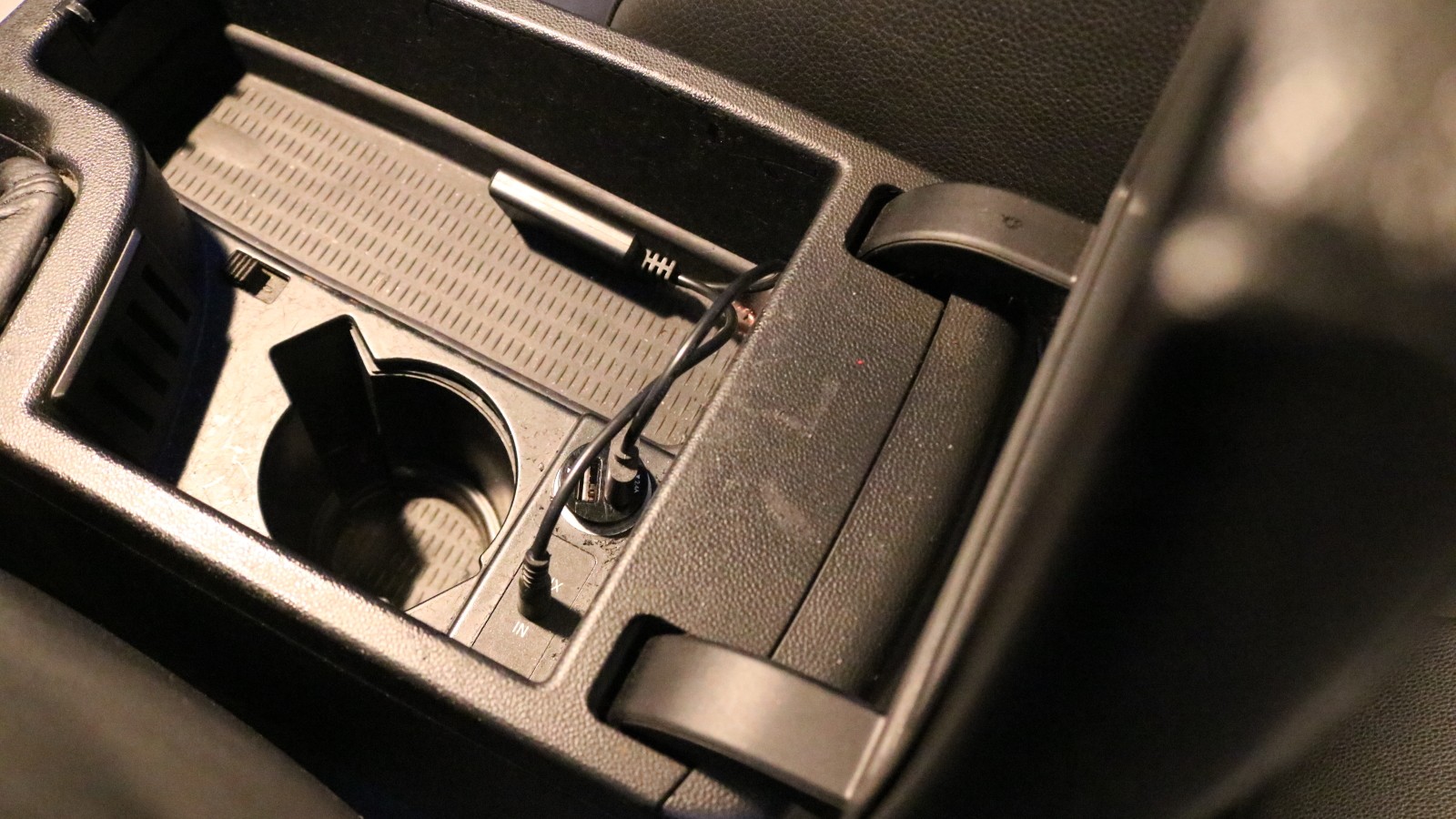Classic cars offer a unique driving experience and a charm that modern vehicles often lack. Many enthusiasts cherish the simpler mechanics and timeless designs of cars from the mid-2000s and earlier. These vehicles are often reliable and enjoyable for daily driving. However, stepping into an older car can sometimes feel like stepping back in time in terms of technology. Modern conveniences we now take for granted, like built-in navigation and seamless smartphone integration, are frequently absent. One particularly noticeable absence is often high-quality Bluetooth streaming for audio. While some older cars might have Bluetooth for phone calls, streaming music wirelessly is often not an option. This can be a significant drawback in an era where smartphones are central to our digital lives and many new phones have eliminated the traditional headphone jack.
For owners of these beloved older vehicles, the desire to stream music and podcasts from their phones is understandable. The good news is you don’t need to undertake a complex and expensive dashboard overhaul to bring your car’s audio system into the modern age. A simple and inexpensive solution exists: the Bluetooth Adapter For Older Cars. Specifically, a small Bluetooth receiver designed for car auxiliary ports can seamlessly stream audio to your car’s speakers, provided your car has a standard 3.5mm auxiliary input.
While audiophiles might argue that Bluetooth audio doesn’t quite match the pristine fidelity of a direct wired connection, the convenience it offers is undeniable, especially when paired with modern smartphones lacking headphone jacks. If you rely on your phone for navigation using a dashboard mount and need to keep it charged, Bluetooth becomes an exceptionally practical choice, eliminating cable clutter and allowing for simultaneous charging. However, a common challenge arises when trying to integrate many standard Bluetooth receivers into older car interiors, particularly in models like the BMW 325i, where space around the auxiliary port and power source can be limited.
The issue isn’t complex electronics or car incompatibility, but simply physical space. The area around the in-console 12-volt socket and the closing lid of the center console in many older cars doesn’t offer much room. Many bulkier Bluetooth receivers simply won’t fit without being constantly bumped or pinched. This can lead to damage and frustration, as one owner discovered when a previous, larger Bluetooth receiver succumbed to pressure from the console lid, resulting in a rather dramatic failure.
Fortunately, there are bluetooth adapter for older cars designed with these space constraints in mind. A particular model stands out for its clever design. Instead of a bulky USB dongle, it utilizes a small plastic enclosure with separate USB and 3.5mm cables extending from it. This configuration is perfectly suited for vehicles with tight clearances. The compact size of the receiver casing itself ensures it occupies minimal space within the console. Installation is straightforward: plug the 3.5mm audio cable into your car’s auxiliary port, connect the USB cable to any USB power source (like a cigarette lighter adapter), pair your phone via Bluetooth, and you’re ready to enjoy wireless audio streaming in your older car.
This type of bluetooth adapter for older cars offers several advantages beyond its space-saving design. While it might not be flawless – phone call quality may be adequate but not exceptional, and the startup process can be a little basic – the core functionality of seamless Bluetooth connection and good sound quality is reliably delivered. A key design feature contributing to the sound quality is the hardwired 3.5mm cable. By directly wiring the cable to the receiver instead of using a 3.5mm jack on the receiver for a separate patch cable, the manufacturer minimizes potential connection issues and signal degradation. It’s important to acknowledge that no Bluetooth receiver will perfectly replicate the audio fidelity of a direct wired connection. Bluetooth codecs, even popular ones like AptX and AAC, involve some degree of audio compression. However, this compact receiver performs admirably, offering sound quality comparable to Bluetooth systems found in many original equipment manufacturer (OEM) car audio systems.
Another user-friendly aspect of this bluetooth adapter for older cars is its button-free design. The absence of a pairing button on the receiver itself eliminates the risk of accidentally pressing buttons when reaching into the armrest console, a common annoyance with some other models. And perhaps most appealing is the price. Priced affordably, it represents a significantly more economical solution than attempting to retrofit a modern wireless charging system or perform more invasive modifications to your car’s audio system. For anyone seeking to add Bluetooth audio to an older car, this type of adapter offers a fantastic balance of convenience, performance, and cost-effectiveness. While a direct 3.5mm auxiliary cable remains a preferred option for ultimate sound purity, the freedom from cable clutter and the ability to charge your phone simultaneously on longer journeys make a bluetooth adapter for older cars like this an incredibly worthwhile upgrade.
(This post contains a few Amazon affiliate partner links. If you buy something by clicking on a link The Autopian may make a commission)
